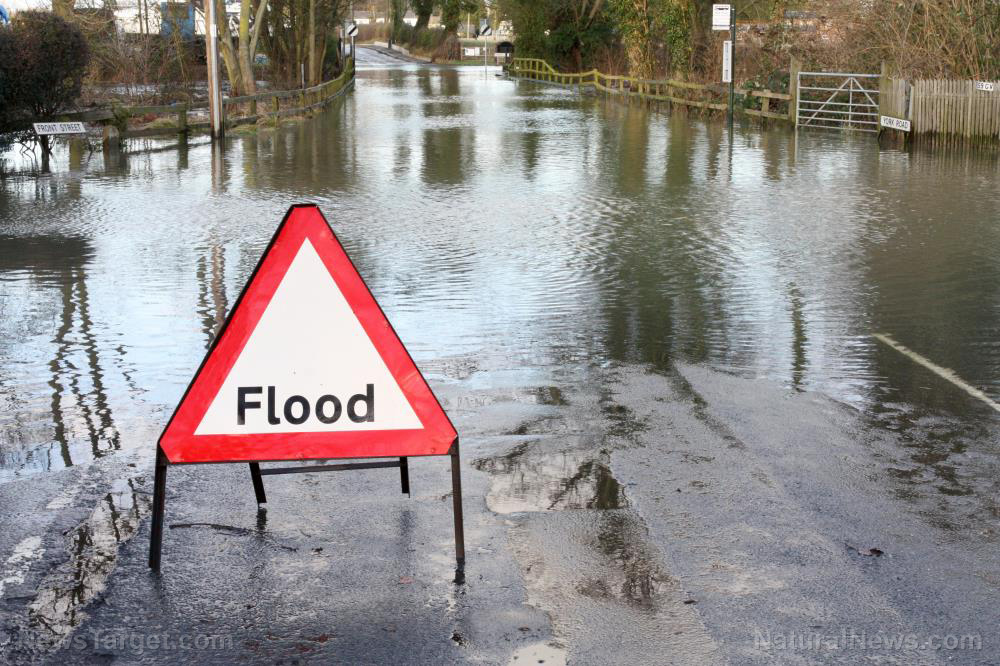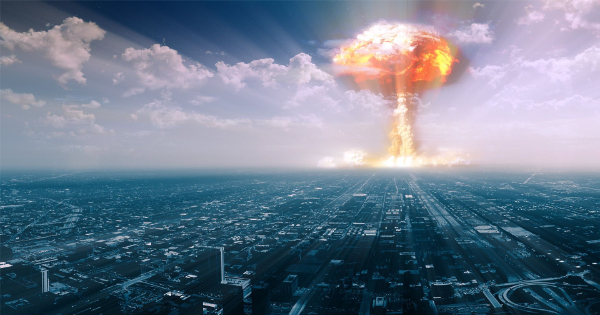Healing rights and healing rites: An interview with Nick Polizzi of ‘The Sacred Science’
12/10/2015 / By healingartsnews

We often take a stand for our healing rights – the right to have the treatment, the food, and the environment that provides us with what we need to heal. One filmmaker says that while healing rights are essential, there is also much to discover in healing rites that lead us towards to the sacred aspects of healing.
Last week, Nick Polizzi, the director of “The Sacred Science,” a documentary about North Americans’ journeys into the Amazon to discover traditional healing practices, discussed these topics.
MB: There seems to be something missing in medicine these days – what’s that missing ingredient? NP: We have a folk tale from 250 years ago that when Humpty Dumpty fell off a wall, all the people couldn’t put him back together again. Yet today, I have friends in Colorado who fall 30 feet from the sides of mountains, and their serious flesh and bone injuries that would have left them crippled or dead centuries ago are put soundly back together.
The point I have to start with here is that humanity has come from a past so treacherous that the rational brain was perhaps justified in seeking survival by dividing, measuring, analyzing, and categorizing the body into smaller and smaller parts. As someone who’s known bad injuries, I am quite grateful that medicine came to understand the physical properties of nature, and learned to treat the body in a rational-brained way at certain times.That was the left brain doing what it does best. As a director, I need to be humble enough to admit we needed that strong left brain and that, sometimes, a life is saved through it.

MB: Yet, your work appears to be in exploring forms of healing that look quite different from modern medicine.
NP: The physicians with Newtonian worldviews started us down a road which has led to many modern practitioners looking at the body as a machine and just a machine. While we can say the positive side of this is the blunt injuries we can repair now, the problem is that modern health professionals have let the Newtonian machine model, which is now many decades old, become the almost exclusive model used by health practitioners today.
MB: Do you think the Newtonian scientists who started modern medicine, if they were alive today, would have meant to close off modern practitioners’ from incorporating new models?
NP: The discovers of the principles on which modern medicine rests today actually had a more esoteric view than most health professionals today. They respected that there are mysteries they could not know with their models, and they even talked about unseen worlds and energy systems. If these pioneers of medicine were to be considered great, it should be because they knew how much of the mysteries of healing they did not know. So, no, the point for health practitioners today is to discover greater models.
MB: What do you see as a stuck point in the model now conventionally used?
NP: Maybe because of “succeeding” in certain surgical areas of treatment, it seems that medical providers have grown complacent with relying on the models of their forefathers. We seem to have fallen into believing that anything, any energy flow, and any connection we cannot currently see must not exist.
This is the price of a medical practice set in the conventional model: we lose anything that can’t be defined by a very rigid set of criteria, and we say that if it doesn’t fit into categories humans have conceived in the past about natural phenomena, then it doesn’t exist.
MB: As limiting as that sounds, how badly are we being compromised by this close-mindedness?
NP: We’re realizing we have abandoned knowing who we are and knowing how to use the sacred practices that made civilization great and strong. That abandonment, that being “black and white” about what does and doesn’t exist, is like an acid eating away at our civilization and our health.
That’s why I point my camera lens toward the fork in the road, back when medicine abandoned the unseen and the creative chaos, and we lost our sensitivity to it – because the way to make a difference in our healing potential is to show the way that healing can be an entry point into spiritual growth.
MB: Do you find practitioners of medicine open to that?
NP: To me, it’s all science – even the spiritual side of things. Once we recognize that what is currently measurable and what is yet to be uncovered are all science, then it is easier to be simply perceptive and not too attached.
For example, I very frequently use herbs for healing. My friends and I brag about our crazy herbal tincture collections. Yet the role of a given tincture is constantly being researched and debated again and again. Therefore, herbalists often change their tune about the use of herbs. That’s an example of not being too attached to present or past beliefs of healing.
Analogously, it is my path to point out where our medicine has become closed to the possibility that there are different roles in the healing process for our unique spirit. Our spirit is immeasurable, but so many in modern medicine leave it out. I am investigating what happened when civilization took the fork in the road that has taken us to this emptiness.
MB: What do you think happened?
NP: Consider the following commonsense. An individual can gain only so much variety of knowledge by going down any one path. She will gradually reach a plateau in what she does know, and she will never know as much about the other paths that she does not go down. If I study only guitar for 40 years, I will become great and then eventually, get to a limit in how much new skills I can keep learning about guitar that will make me a better player. I also won’t know that much about playing, say, the tuba.
So too, as a civilization, we’ve gone down the “male,” left path of the brain, that chiefly breaks down and analyzes the physically perceived components of biology. We have gone nearly as far as we can go and still expect highly beneficial returns. As a civilization, we also don’t know that much about the right hemisphere of the brain and its healing powers and benefits.
Now, it’s time to backtrack in order to revisit the crossroad when we took the Newtonian or mechanistic way of looking at the world. I am really interested in seeing, from that crossroads in the past, what other paths we can take from there. What amazing aspects of human powers and experiences did we abandon? Are those other paths still available for us to walk?
MB: What other paths have you begun to find at that intersection?
NP: In the path of the sacred feminine, the right brain, the apparently chaotic and the unseen energy of the universe can’t all be verbalized, analyzed, or quantified. The healing potential in the world’s enchantment, the magic, the unknown, the work with the chaos and the feminine, is enormous! There’s no reason we can’t combine what we have in our rational brain with the feminine, the chaotic, and the esoteric.
Today, many indulge the rational part of ourselves in doing what our medical doctor tells us. For example, if we were a machine, it might seem rational to try to lose weight through undergoing surgery that shrinks the stomach. “Smaller fuel tank, smaller fuel intake,” goes the thinking.
What we’re crucially missing out on is the deeper side of the issue. The deeper side includes asking if we have cleaned the windows of our perception enough now to see the benefit we can get by dealing with the underlying, causal level of the issue?
MB: Suppose someone doesn’t know anything about the deeper side of the problem, as you call it. What are they missing out on?
NP: We are missing out on a much greater healing and a spiritual growth as a human being. My collaborators and I are going after showing healing as the entry point to advocate for spiritual growth as being a major goal as individuals.
I don’t know that spiritual growth is one of the most important aspects of human life for us anymore, but at one time it truly was.
Rites of passage were big deals. Now they are swept away. Rites most of us know are turning 16 and getting to drive, 18 and being able to vote, turning 21 and being able drink alcohol, and turning 25 and paying insurance premiums. Rite of passage ceremonies used to be a lot more significant. They used to be a big part of our life on the planet. Healing the interior and spiritually growing is as important as treatment of the exterior and the physical.
MB: How would you define the relationship between healing and rites of passage? Can you illustrate an example?
NP: We could go into any modality, but take fasting. Even changing the diet for a two-week raw food cleanse can become a personal saga! Whether it is fasting, or dietary change, or plants that induce certain states (entheogens) – not all of them are for everybody – they are perfectly valid healing rites of passage.
A lot of the same principles apply to these these examples. In both fasting and entheogens, amazing challenges AND epiphanies may happen. In fasting, it is over a one to three week period, so they happen in a more gradual, and possibly more easily integratable, way.
Either way, a shaman calls it a “shake-up.” In shake-ups you discover what you’re carrying that’s beneficial for you, and what needs to be let go that doesn’t serve you any more.
MB: How can people begin to bring more healing rites of passage into their lives?
NP: What people want so badly is their full experience of being human, which usually implies their wholeness, dignity and acknowledgment as an individual. Oftentimes we stand up for our healing rights as a way to protect our dignity and freedom from outside repressive threats.
I say, too, that we get half of our human experience, dignity, and freedom from our internal selves by being showing up in healing rites.
Why I love indigenous cultures is because they make ceremony, ritual, and meditation out of everything. The notion of actions without ritual doesn’t make sense for many indigenous people alive on this planet today. All they know is ceremony, and everything is sacred. There is almost an inner yearning that I, and a lot of people, have today for a more sacred and connected existence.
MB: Yes, indications that people are increasingly yearning for fulfillment from within are everywhere. Is there something you see in indigenous ways that unlocks that for us?
NP: Here’s the defining metaphor of the yearning: have you ever seen a picture of the Earth from the Moon? The Earth looks like a small blue moon.
When Carl Sagan witnessed that photo of the earth, he said:
“It has been said that astronomy is a humbling and character-building experience. There is perhaps no better demonstration of the folly of human conceits than this distant image of our tiny world. To me, it underscores our responsibility to deal more kindly with one another, and to preserve and cherish the pale blue dot, the only home we’ve ever known.”
That’s the very point of the role of healing and sacred rituals. You can have the medical “expert” who possesses so much knowledge on the rational side of himself, but may not know his own tendencies, his own lineage, his own neighbors, and his own community.
When we get in touch with the true nature of who we are, and the fabric of our relationships, there is as much to explore in the universe within as there is to discover by quantifying things, launching satellites into orbit, and surgically modifying a body that, in truth, may be suffering from a deeper trauma.
Look at approaches to agriculture that treat animals and plants as soul-less beings, rounding them into these slaughtering and processing machines. Why? It is ourselves we are seeing as soul-less beings. When chemically and machine processed stuff becomes food for human beings, we miss out on so much of the experience of being alive, on this planet which feeds us. The process of sourcing our food consciously can be a healing rite in the same way as fasting, herbal healing, and entheogens.
MB: What lends a healing practice the sacred power it needs to truly be a healing rite?
NP: In a story of a friend of mine, we see how holistic modalities become can become powerful as a ritual, or not.
A good friend of mine (I won’t name names for she’s in the public eye), wanted to do a raw food fast for 30 days. She wanted to lose weight and get her vitality back.
However, throughout her raw food month, it felt like she was resisting it, holding her nose through a new and different experience, and just going through the motions.
What happened was she didn’t get any benefit. She didn’t lose any weight nor did her complexion improve. Nothing shifted.
Now, I’ve seen people have huge transformations on 30 days of raw food. “Simply Raw” the documentary shows some examples. So clearly, the individual’s frame of mind and consciousness while the experience is happening is so essential to healing rites.
What happens in a case like with my friend is we start gripping and “just-wanting-it-to-be-over.” When you “hold your nose” to the potentially uncomfortable initial experiences of a healing rite, and just want it to be over, you don’t allow the full benefit of the experience. The holding of the nose is a resistance to the possibility of healing. In physical terms, ask yourself: can you get life-giving air into the lungs with the nose held? It is the same with healing rites. With the “nose being held,” figuratively, you cannot “inhale” the energy of the healing benefits. We have to let feeling and sensation come into numb areas. If you don’t, you can end up fighting off the very healing you want to come to you.
The key to ceremonies, regardless of what you are ingesting or fasting from, is to let go and be fully present. Healing is a blossoming of trust – first and foremost a trust of your own experience. The more you resist in a healing rite, for distrust of it, the worse it’s going to be. When you clutch so hard to your old patterns that no longer serve you, you don’t let the shake-up get you unstuck. And when you do let go and let the healing rite take you, you are open to the freedom and the benefits.
MB: Isn’t it important that any type of healing rite be conducted in a space that the participant goes into knowing and trusting has been made safe by the facilitator and the environment?
NP: Yes. Civilization as a whole and the individuals drawn to healing rites are responsible for cultivating such safe spaces for letting go, or else these methods are rendered dangerous or ineffective to the people.
MB: You started off conveying that you don’t blame humanity for our fear that brought about the ways we’ve been choosing for our model of healing. We have walked an uneasy road at times. Is letting go of resisting, then, a willingness to trust and allow traumas to heal?
NP: Even as a species reacting in our fear, we made some amazing accomplishments (like aviation, emergency surgery, engineering, etc). So I don’t “blame” us. But the track we have been walking also brought some of ugliness and derangement into our society. So what we have is, again, the teaching from Carl Sagan: With all the advancements of humanity, like reaching the moon, came to visualize and prize the pale blue dot ofbeing at home.
Said in the realm of healing: with all the advancements of technology and procedure in medicine, the greatest advancement possible for a human now is in the experience of what is most close and intimate to us. Healing rites are about the inner worlds, the intimate relationships, and the abandoned paths of health and medicine as access to the spirit that we are bringing back into knowledge.
Medical techniques can make life more predictable. My infant son, once he gets past the SIDS risk period, is probably going to grow up with his general safety intact in the modern world, and I’m grateful for that.
But at what cost is this predictability? We owe it to ourselves, if our goal is to advance in a whole and complete way steadily and surely from now forward, to look at things that maybe we had thrown out like a baby with the bathwater to get to this place.
Now that we have solved the rational problems in order to keep us safe from certain physical threats from the past, it will only suit us to start taking a few steps back and revisiting essential things of the sacred we may have frantically discarded in favor of more predictable techniques for sustaining our physical lives.
The questions that constantly hold my interest in healing and creating films are, “How well do we understand where we are in our healing process and our spiritual growth, and how, as human beings today, do we keep growing as whole human beings?”
MB: Thank you for sharing your thoughts today, Nick.
NP: Thank you, I enjoyed the conversation.
Nick Polizzi is the director of “The Sacred Science” and editor of “Simply Raw.”
Submit a correction >>
Tagged Under:
This article may contain statements that reflect the opinion of the author





















